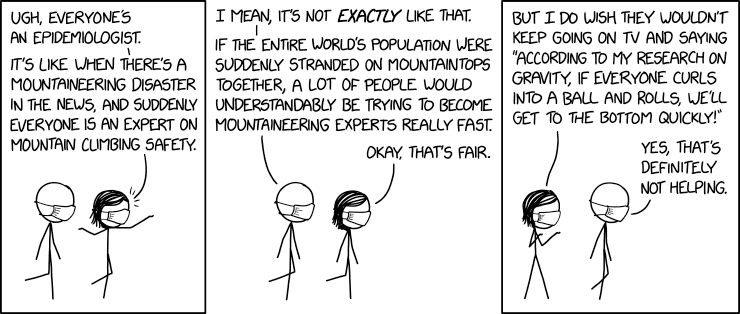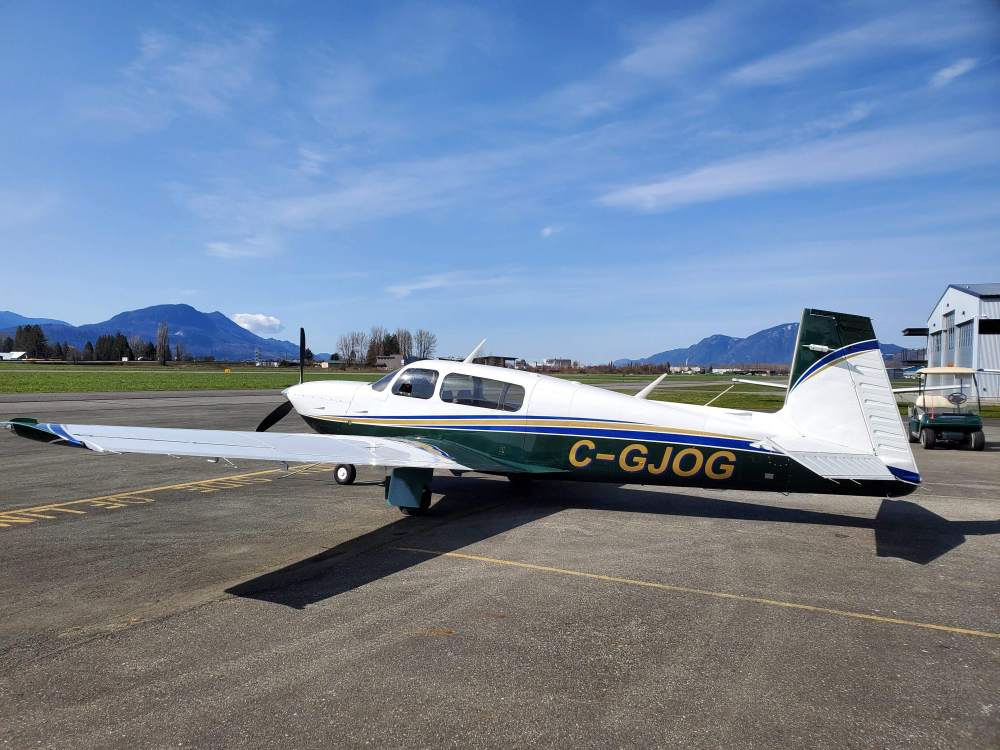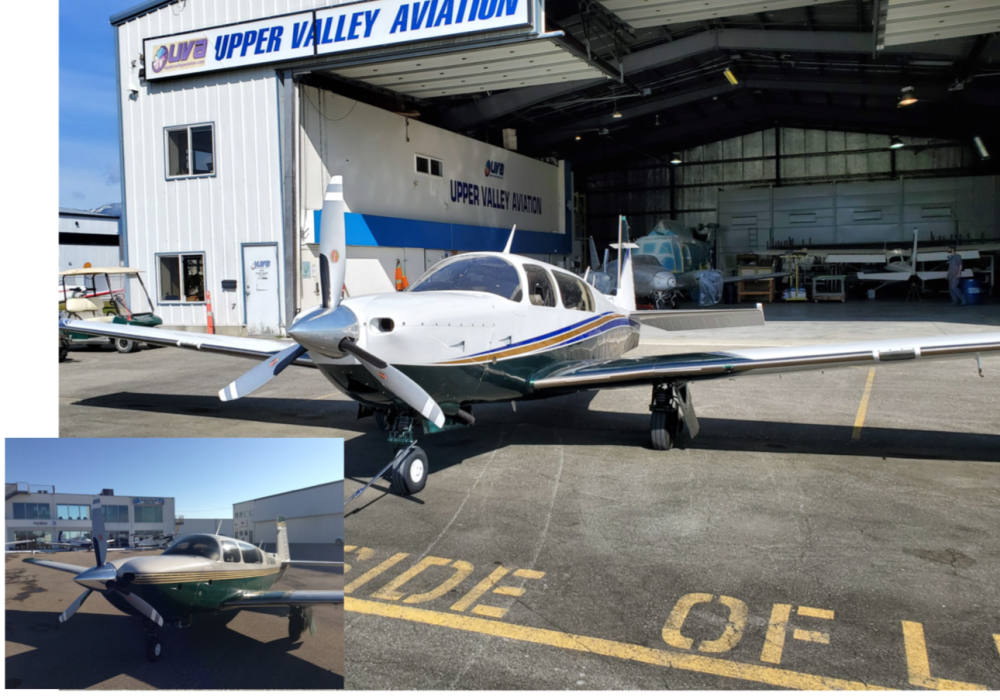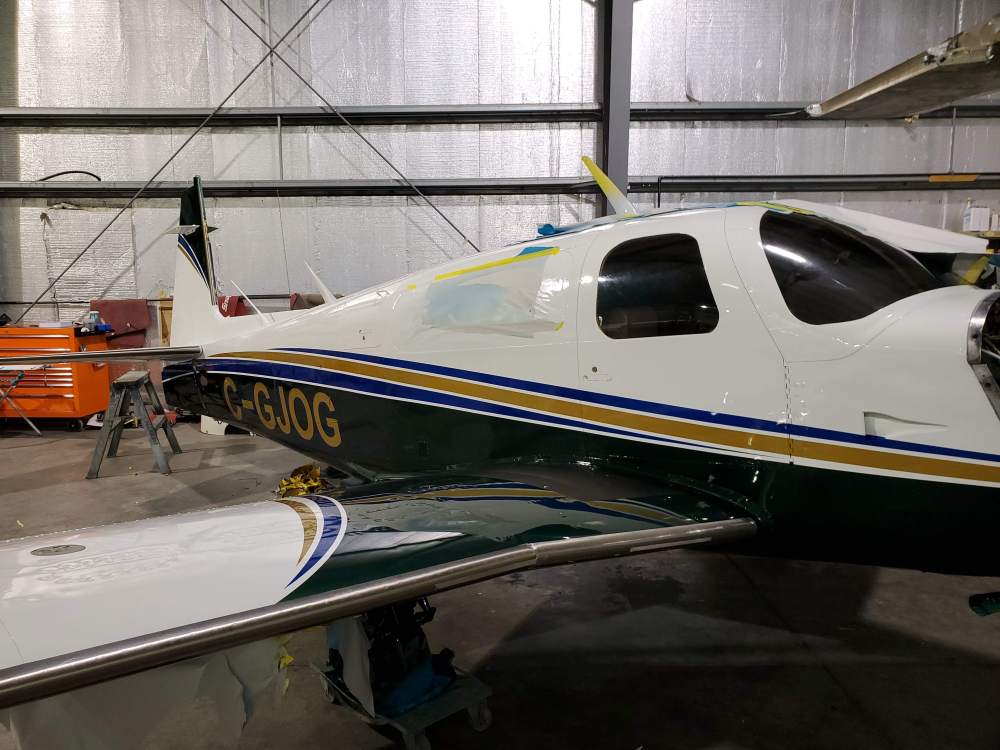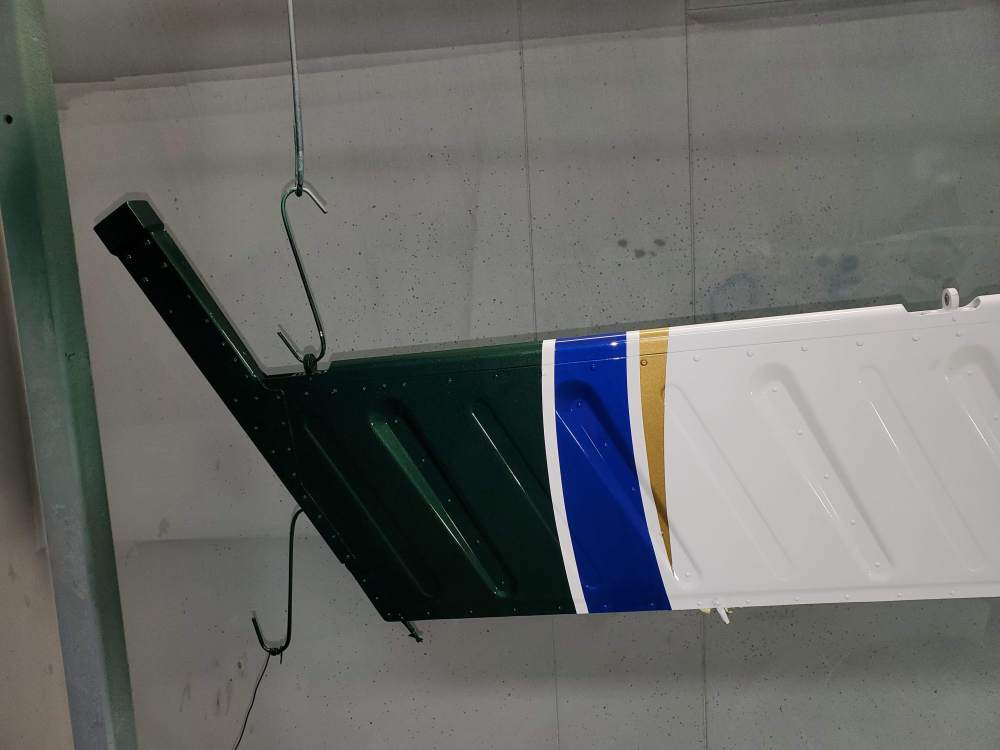-
Posts
520 -
Joined
-
Last visited
-
Days Won
4
Content Type
Profiles
Forums
Blogs
Gallery
Downloads
Media Demo
Events
Everything posted by BorealOne
-
Not at all. There was still fresh air intake - just reduced by 80% or so - and plenty of air exchange still occurs through the non-pressurized hull.
-
I used to plug the cabin air intakes on the cowling with foam during the winter months. Made all the difference flying in Canada’s far North.
-
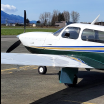
KFC-150 Go Around/Missed Approach Procedure
BorealOne replied to Greg_D's topic in Modern Mooney Discussion
It's a bit of a two step process without altitude pre-select, however. Garmin 530W use OBS to sequence the next waypoint, but altitude needs to be managed using either the CWS or the altitude up rocker switch. Depending on conditions, I've used either or both. Going missed at minimums, I'm usually happier using the CWS, as my right hand is busy doing lots of other things (power, gear, flaps, trim...) followed by alt-hold once I'm there. -

Partial panel/loss of control in IMC
BorealOne replied to BorealOne's topic in Mooney Safety & Accident Discussion
I couldn't agree more. I've now had two vacuum failures in IMC in my flying career. In both cases, the KFC-150 AP followed the rolling KI256 AI into a bank as the gyro tumbled. The first time it happened, I was in a descent from 14k through cumulus, and in the clag and the turbulence, I didn't notice the bank until I was in a proper spiral dive. It got a little bit exciting as airspeed and VSI steam guages spun up and the altitude gauge spun down, but I was able to transition to hand flying on electric backup AI, and get straight and level in turbulent IMC before loss of control. Second time was more recently over the Rockies - climbing through icy stratus layers. Much less exciting, as I'd subsequently installed an Aspen and the uncommanded bank on the part of the AP was obvious in the scan on the PFD, and easily resolved by a simple transition to hand flying. It should always be that easy. However, my own risk profile is conservative, and my SOP is simple - with only one functional AI, find a VFR alternate and land. But I do want to be aware of and proficient with all of my resources - so I'll be practicing partial panel with my iPad. Just in case. -

Partial panel/loss of control in IMC
BorealOne replied to BorealOne's topic in Mooney Safety & Accident Discussion
Agree. If you are pulling it out an iPad the middle of an upset in IMC, you are doing it wrong. But if you have it up and running already on your yoke, running a moving map display, or in the case of the lost King Air crew - on both yokes - there's no reason not to use it. I'm with you - the more redundancy I have, the happier I am. Having lost my vacuum AI twice now, both in IMC, I've always appreciated having a backup. Or two. -

Partial panel/loss of control in IMC
BorealOne replied to BorealOne's topic in Mooney Safety & Accident Discussion
That seems to have been the case here. Having rolled into a spiral dive, they were going downhill fast. There is a pretty good chance that the AP was already following the failing gyro into the roll before it disconnected. as the TSB notes: "During the descent, the aircraft was calculated to have reached a maximum airspeed of over 400 knots calibrated airspeed (KCAS) just before impact, which exceeds the maximum operating speed of the aircraft by approximately 141 knots. The aircraft also achieved a maximum descent rate of 35 637 fpm". The no-gyro radar vectors option is avail where we have radar coverage, but that can be limited in Canada (and particularly here in the North). They wouldn't have been in radar range in this instance. -

Partial panel/loss of control in IMC
BorealOne posted a topic in Mooney Safety & Accident Discussion
Not a Mooney incident, but a chilling read - https://www.tsb.gc.ca/eng/enquetes-investigations/aviation/2019/a19w0015/a19w0015.html Pilots on board a King Air 200 depart with 1 working AI. The working AI rolls in descent in IMC. Pilots lose control, plane enters spiral dive. Plane impacts terrain. What stands out for me is that the pilot flying had a perfectly functional iPad Mini on his yoke, running Foreflight with synthetic vision. The pilot failed to make use of it. My take away - and recommendation for Mooney pilots similarly equipped - is to practice partial panel before you have to do it for real, and to be familiar with the use of the standby AHRS system on Foreflight. -
-
I think a better question at the moment is "what does winning look like?". To quote the great philosopher Kenny Rogers, "there'll be time enough for countin', when the dealin's done" Given that we are dealing with a viral pandemic, I think the only responsible answer to that question is when R (the effective infection rate) is less than 1, and likely to stay that way. Anything else means that the virus is winning, spreading faster than it can be contained, or likely to do so. So what are the 'winning conditions'? R < 1 happens when there is sufficient herd immunity so that it can't spread easily (either through a vaccine or through exposure/recovery/immunity). Until we get there, testing, tracing and social distancing are going to be necessary. And that's where policies will differ. Folks who want to take a deep dive into the theory, evidence and tech that might help end the lockdowns, open the economy and avoid a lot of people getting sick or dead on the way to R < 1 might want to read my favourite explainer Tomas Pueyo's latest piece. 30m read, but super informative re: how we humans might use our brains to win against a stupid virus. https://medium.com/@tomaspueyo/coronavirus-how-to-do-testing-and-contact-tracing-bde85b64072e
-
This pretty much describes our moment here in the North. In the NWT, there are more caribou than people. We are remote, not rural. 40,000 people spread over half a million square miles (much bigger than Texas, almost as big as Alaska). About 1/2 the population lives in Yellowknife, a city of 20,000 people. Everyone else is in small towns and villages, most of which are fly-in only for much of the year, once the ice roads melt. Most of the population is Indigenous (native). At present we are under a pretty draconian lockdown. No non-essential travel to the Territories. Anyone coming in gets to quarantine for 14 days, or must remain completely isolated from the population for the duration of their stay. No indoor gatherings of any size. All schools and most businesses closed. Checkpoints at all road crossings and major airports. Most of the remote communities have implemented further measures to control virtually any non-resident entry into their communities. Everyone is feeling the pinch - economically, we are a resource economy. Diamonds are the biggest export. One of the mines has filed for bankruptcy protection because it turns out you can't move rough diamonds in the midst of a pandemic. Oil and gas is next. Folks know what's happened on that end. Tourism isn't happening - so all the small air operators, restaurants, hotels, and other small businesses which service that sector are in freefall. We also have ZERO cases at the moment. Since the outbreak, we've had 5 confirmed cases, all determined to be travel exposures, all of whom were isolated and have recovered with no evidence of community spread, evidenced by no new cases for several weeks. As of today, over 1700 tests have been administered, of which 1679 have returned negative, 39 waiting for results. We might have dodged a bullet. So why aren't people rioting in the streets to 'end the lockdown'? On the contrary, there remains strong support for it. Why? It's pretty simple. Folks have long memories. Many of the villages were nearly wiped out in the 1921 pandemic, and the stories of what happened, and how it happened, have been passed on. Elders are saying to leaders: "we didn't know what was happening then, but now we do. We'll wait it out, and we'll try to survive." Scientists are saying that we have the perfect conditions for rapid spread - small, tightly integrated communities, with many people living in multi-generational homes. Basically - it would be wildfire in our small communities. Our critical care resources are centralized in a few of the larger centres. We have 6 ICU beds and <20 ventilators in the Territories, total. Most villages have a nursing clinic, and rely on medivac flights for anything more serious. In any outbreak scenario, these resources would quickly be overwhelmed. So leaders have been listening to the scientists and to Elders, and are continuing the lockdown. At the same time, we all know the lockdown can't last - it's completely unsustainable. The plan, which is still taking shape, is to re-open gradually, but only after a few conditions are met. First, there has to be accurate testing that can be run in the communities with results within an hour. Fortunately, there's now a box for that (a PCR test running on a Spartan Biosciences platform called the "Cube" that is about the size of a large coffee, and can be used by non-techs) and those machines will be avail and running here in a few weeks. By the end of May, we should be able to test rapidly, and have enough tests to administer them to asymptomatic individuals as well. That will be a big step. We also need an effective system of contact tracing, and facilities to isolate and contain known cases AND potential exposures. That's harder, and will take some time to work out all of the infrastructure to support that. As these conditions are met and resources come on-line, we expect some relaxation of social distancing measures and protocols inside the NWT. There will be a staged re-opening of schools, businesses, and other services. But it ain't going back to "normal' for a while, and tight restrictions on people coming into the NWT are likely to remain in place for the foreseeable. No one expects miracles, but no one can afford mistakes. It's a tough corner.
-
Nice! That's definitely next on my list. looking forward to photos and pireps.
-

Preflight Coffee for Established Gentlemen Aviators
BorealOne replied to Stephen's topic in Miscellaneous Aviation Talk
Damn. I don't. The emergency checklist currently requires diversion to the nearest cafe...less optimal, but there's only so much room on the countertop. I can see the argument for the Nespresso backup though - those little machines make some quality coffee. -

Preflight Coffee for Established Gentlemen Aviators
BorealOne replied to Stephen's topic in Miscellaneous Aviation Talk
When it comes to coffee, I'm all about steam gauges. Profitec 500 w/ PID, Baraza Sette 270i grinder, and Lavazza Crema e Aroma beans. 18g in a double porta-filter at 9 bar for 30s to distill 50g of delicious espresso elixir, straight up. Sure, you can pay more for fancy artisanal beans, but I've learned to never challenge the Italians when espresso is on the line. -
I made it to the 10m mark. I'm an attorney, not a physician, but a big part of my practice is critiquing expert evidence presented in regulatory hearings, and i've learned a few things along the way. This won't shock anyone here, but most people don't understand evidence, much less statistics, which makes it really easy to get stuff wrong, or less charitably, to use the "numbers you like" to persuade yourself or others about the outcome you want. Numbers don't lie, but people do. I've lost track of the number of times that I've examined experts and forced them to 'qualify' conclusions that can't be supported because of a couple of hard statistical truths: 1/ small samples are worse than useless, because they tend to exaggerate errors, and 2/ non-random, non-representative samples (ie symptomatic persons tested for COVID) can't tell you much of anything about a population as a whole. The good Dr. Erickson doesn't seem to understand either of those concepts.
-
Appreciative of the informed discussion above. One of the better series of articles I've read from a policy perspective is Tomas Pueyo's excellent series in Medium: "The Hammer and the Dance". Deep data and analysis made accessible. https://medium.com/@tomaspueyo/coronavirus-the-hammer-and-the-dance-be9337092b56 Basically, the initial social distancing measures were - as every rational person now recognizes - necessary to slow the exponential spread of the virus, and to buy time for health care systems to get to the point where they are not overwhelmed trying to keep large numbers of people breathing, and to allow time for therapeutics and treatment modalities to be worked out. That was the "hammer". Hopefully, in most jurisdictions, this will give way to the "dance"...which will continue until either there is an effective vaccine or until there is sufficient herd immunity as a result of exposure, neither of which will happen soon. https://medium.com/@tomaspueyo/coronavirus-learning-how-to-dance-b8420170203e Some countries are already through the Hammer phase, and are relaxing their lockdowns. It's not "normal", but the policy goal is to combine measures that bring economies back on line, while keeping the virus’ transmission rate below 1 so that it doesn't spike again. https://medium.com/@tomaspueyo/coronavirus-the-basic-dance-steps-everybody-can-follow-b3d216daa343 Definitely worth the 20m read. Almost as educational as MS.
-
can't wait to see the final!
-
Great discussion on this thread, and as Anthony notes, an informed and thoughtful one - which is rare in these troubled times. While the virus doesn't do politics or economics, it does create new conditions for both. <speech on> As a lawyer working at the intersections of resource development, constitutional and public law in Canada, I'm seeing daily evidence that our existing legal orders are being challenged in the current crisis in unprecedented ways. If anything is clear - we'll need both an informed and enlightened leadership (not just politicians, but at all levels of society) and an informed and altruistic citizenry to navigate this crisis. I don't think that we can say with any confidence that those conditions exist, but at least in a democracy, we have to the option create them. We can be moved by the angels of our better natures, and work to protect each other while maintaining the foundations of our many rights and freedoms. I think we all recognize that in any functioning society, no right is absolute, and that in many cases, our individual liberties must necessarily give way to protecting our fellow citizens from harm. In an emergency, those imperatives are greater. At the same time, we must hold those who are in power accountable for their decisions by insisting on transparency and best evidence to inform policy, and equally, be vigilant against misinformation and on guard against those who would use the present crisis to further their own ends. <speech off> For more and much more eloquent thoughts in a similar vein, I'd recommend this piece by historian Yuval Noah Harari in the Financial Times of London as he weighs the impacts and benefits of using surveillance technology to fight the virus. He argues that we can have freedom, privacy and health - but it will require much more of all of us and our institutions. https://www.ft.com/content/19d90308-6858-11ea-a3c9-1fe6fedcca75
-

Straight in RW04 - make that Hw40...
BorealOne replied to BorealOne's topic in Miscellaneous Aviation Talk
Lol - let me tell you about driving in Quebec...i'm pretty sure that "talonnage" translates as "driving cautiously". -
https://globalnews.ca/video/6829384/small-plane-lands-on-quebec-highway Some damn fine flying.
-
The original quote for base while + 2 colours (full strip, acid, alodine, minor bodywork, and complete paint and trim) was 25.5k CDN - about $18.5k USD. Main gear + wells were another 2k extra, as was the extra colour stripe in my scheme. All in all very pleased with the work quality and communication.
-
-

M20R Interactive Emergency Checklist
BorealOne replied to GeeBee's topic in Modern Mooney Discussion
excellent resource! thanks! -
Thanks Clarence - will be sure to do that!
-
-


